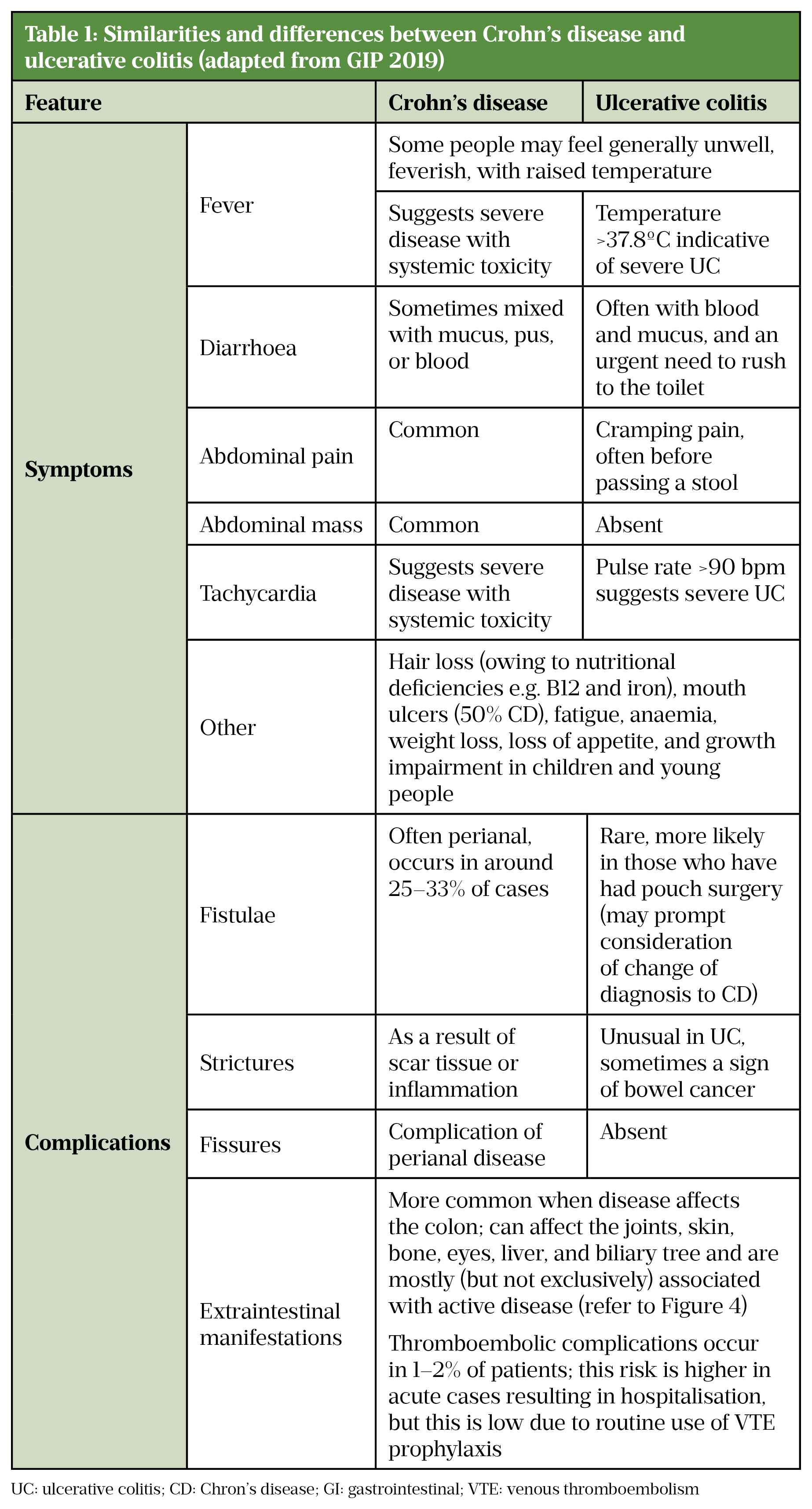A long term condition that causes hot, red, swelling (inflammation) and in serious conditions ulcers (sores that bleed, produce mucus and pus) on the lining of the large intestine colon.
Examples of ulcerative colitis include:
The different forms of ulcerative colitis and their most common symptoms include:
Other types of colitis include:
The clinical similarities and differences between Crohn’s disease and Ulcerative colitis are highlighted in Table 1.

Diagnosis tests
Truelove and Witts’ criteria is a useful tool in defining the severity of ulcerative colitis in adults.
Acute severe colitis is defined by more than six bloody stools a day plus one or more of the following markers of systemic upset:
This condition is a medical emergency and requires inpatient management for intensive therapy.
In such instances, pharmacists should refer patients to their GP or an acute walk-in centre.

Diagnosis to differentiate Crohn’s disease from Ulcerative colitis
Serologic markers for Infamatory bowel disease include most notably Positive perinuclear antineutrophil cytoplasmic antibodies (pANCA) and positive anti–saccharomyces cerevisiae antibodies (ASCA) are associated with Ulcerative colitis and Crohn’s disease.
A colonoscopy confirms the diagnosis of suspected Ulcerative colitis, and it is the technique of choice to assess disease activity in patients with symptomatic Ulcerative colitis.
Medscape
Medication
(Are worst often first thing in morning)
Nail changes:
And/or do not wait, phone for an ambulance if have or develop:
Other signs of flare up include (but not always):
This condition can lead to and/or be associated with:
This condition can cause a wide range of skin conditions:
This condition may show similar symptoms to:
This condition may show similar symptoms to:
Please talk to your healthcare professional (i.e. Medical Doctor/Pharmacist) for further advice
Medical news and health news headlines posted throughout the day, every day.
Latest medical news and expert commentary in your specialty as well as disease information.
Medical Information and health advice you can trust
Wellness inspired. Wellness enabled.
The Pharmaceutical Journal covers analysis, features, opinion, learning and careers articles, providing insight and knowledge about drugs, pharmacy practice, medicines use and healthcare policy in the context of the pharmacy profession and pharmaceutical science.
Find information and advice on health conditions, symptoms, healthy living, medicines and how to get help (British National Health Service).
Better Information. Better Health.
Pushing the Standards of care.
No.1 Hospital in the Nation (America)
Know more. Be sure.
NORD is dedicated to supporting education, elevating care, advancing research, and driving policy for rare diseases.
Know more. Fell better.
Information on how to stay safe and healthy abroad.
Health and fitness news. Recipes, Natural Remedies
Get instant answers, find creative inspiration, and learn something new.
Into the unknown.